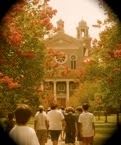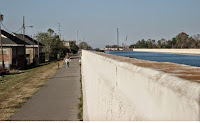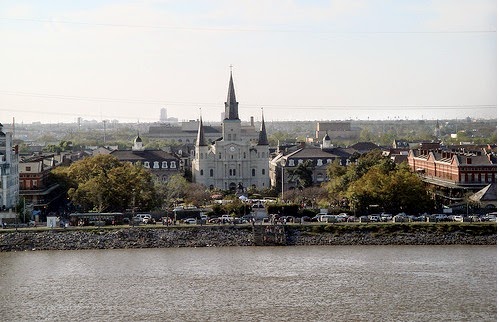It’s funny the images that Cunningham frequently uses in his novels. In an interview with Cunningham in the Kenyon Review (I think it’s the Kenyon Review), he talks candidly about his books and how they have been received by the general reading public; especially his role as a gay author writing books that do not necessarily fit into the Gay and Lesbian genres. It could be said that Cunningham is breaking new ground by writing books from a queer perspective accessible to the non-queer type and not solely formula fiction. Typical gay books tend to follow a formulaic outline: 1.) boy (or girl) is unsure of his/her sexuality 2.) has a sexual experience 3.) there is talk about the danger of AIDS 4.) then “coming out” to family and friends 5.) maybe more sex 6.) falling out with partner 7.) and either a reconciliation or more commonly, going separate ways. I have even heard that some formula fiction (whichever the genre) is so predictable that you can flip through the book quite easily and find all the parts. While not all queer fiction is formulaic, the books I’m talking about are either “coming out” books, gay bildungsromans with stereotypical characters, or they tend to be Harlequin romances or Barbara Cartland yarns with a homoerotic theme. Suffice it to say, hopefully, Cunningham's books represent a shift in queer fiction. He doesn’t even use the word “gay” (if at all) in his novels. Sexuality is fluid for him; what I mean is that sexual identity is not fixed in stone; like the Kinsey model -- none of us are either completely one way or the other; most of us lie somewhere in the middle of the sexual spectrum.
And also, as we mentioned in class — we read novels because we want to read them; we shouldn’t read a novel because a character has or has not a particular “orientation” — so what if a character is gay, straight, transgendered, bisexual or whatever? It’s the same problem we affix to other genres — Christian fiction, historical fiction; as if the genres themselves dictate how we are supposed to enjoy the book. Someone mentioned in class last night that walking into a Barnes & Noble, you get the sense that the books are choosing you not you choosing them.
I can’t help but mention the fact that in the interview in the Kenyon Review the interviewer mentions that in every one of Cunningham's novels there is mention of baking a cake. In Flesh and Blood the mother is baking a cake for a birthday party; in The Hours, Laura Brown sticks her hands into cake dough, evanescent of her repressed sexuality and in a Home at the End of the World, Bobby learns to bake a cake from his best friend’s mother and eventually becomes a chef. Responding to this observation about cakes in his novels, Cunningham laughed and said that it wasn’t done on purpose. But, he said, it was true — cakes are everywhere in his works. If you want to know the symbolism of something in a book don’t ask the writer because he will deny any kind of signification; writers don’t like to give away “why” they wrote a book (as if there is something to “give away”);. Readers, however, are different from the writer of the book in that we want to discover meaning behind recurring images in a novel but authors are reluctant to say, “yes I meant this when I wrote that.” If I were to give meaning to baking in Cunningham I would say that he is very much involved with domesticity, uncovering the mundane “stuff” we do in our everyday superficial lives. But, he just as well may say that it was a coincidence.
Speaking of cakes and domesticity, it is interesting to note how Cunningham “places” his novels. He doesn’t portray starving people in Ethiopia nor does he showcase the horrors of war in Iraq — his novels are about sometimes superficial peoples’ lives in an artificial world trying to find a home. Clarissa in the Hours lives in a fabulous apartment; she is privileged; she is throwing a party for her former lover; like Mrs. Dalloway, it’s all rather superficial. What’s the point? What’s the so what? Cunningham is writing from what he knows just as Woolf wrote from what she knew, her (and his) collection of memories and experiences that serve as the fodder for the novels. What’s more universal: dying of AIDS in Uganda or dying of AIDS on the Upper West Side?
I don’t know if the Hours (or any of Cunningham’s novels) will make the list in the years to come. It’ll be interesting to see what’s included in the canon before my own life is finished. The Hours is a fine book; it is not an imitation of a previous masterstroke, but nor is it a genius piece of work either. I enjoyed it a second time after reading so much Woolf in a short span of time. It was a nice dessert! I can’t help but think, though, that perhaps cake may be Cunningham’s only perduring legacy.









